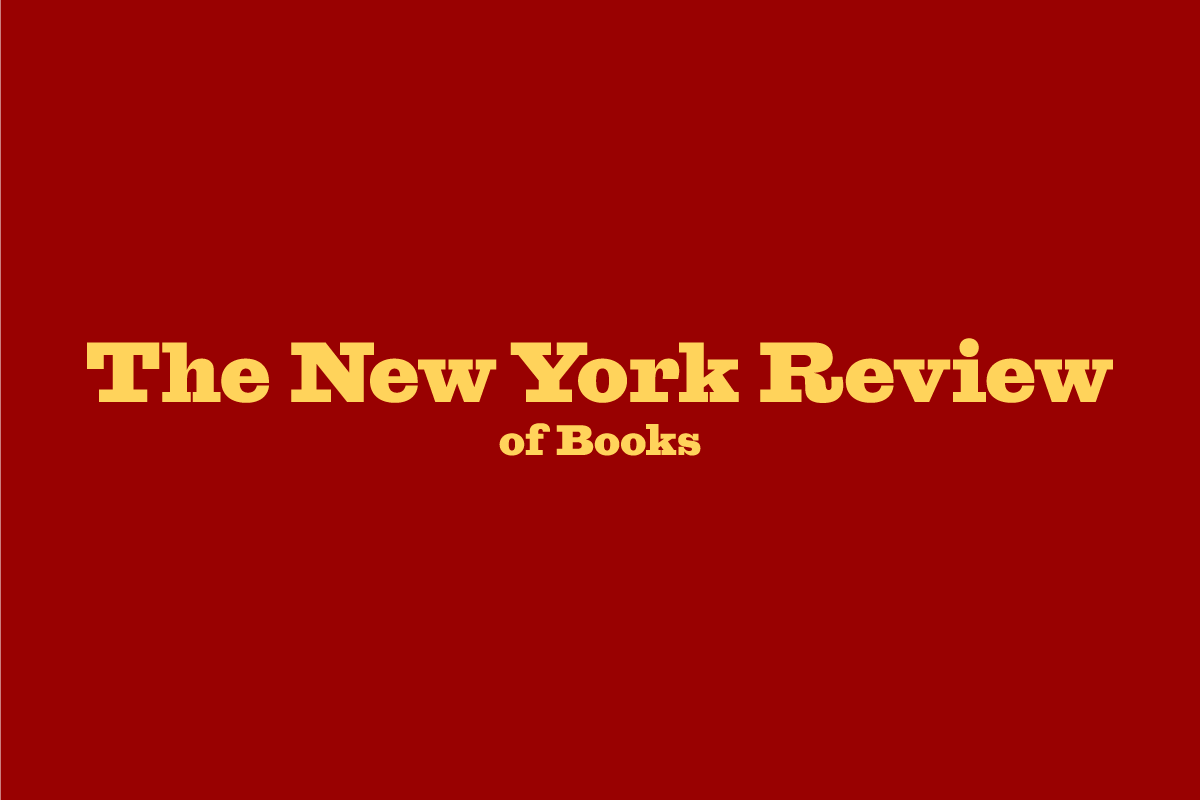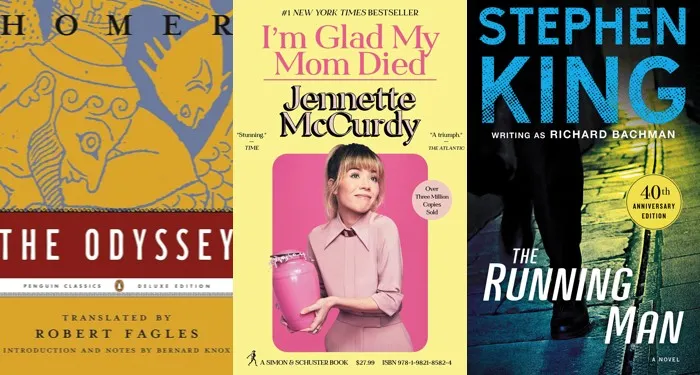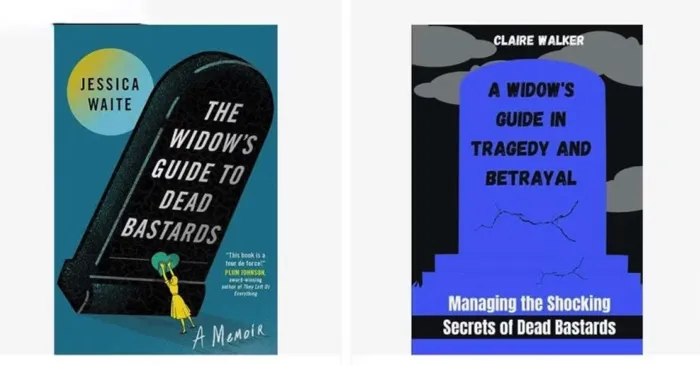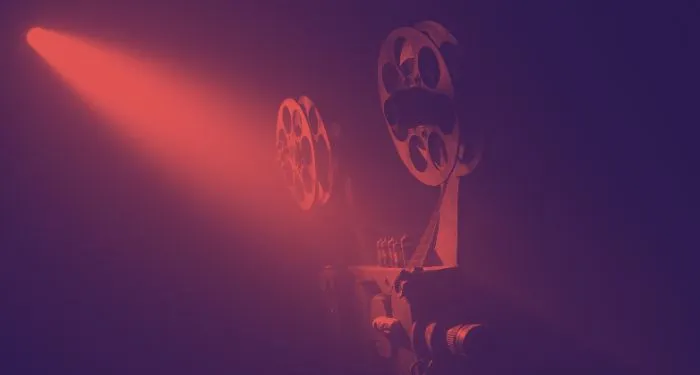In June 2020—three months after the Covid-19 pandemic shut down New York City, killing at least 18,600 residents to that point, in the midst of the Black Lives Matter movement, the biggest social uprising in the city’s history—a wave of democratic socialist politicians defeated centrist incumbents and swept into the New York state legislature. Among them was Zohran Mamdani, then twenty-eight years old, who pulled off an upset win in a state assembly race in Astoria, Queens. Shortly afterward he appeared on Inside City Hall, a venerable local politics talk show on the city’s NY1 cable channel, where the current host, Errol Louis, usually skeptical of leftists, asked Mamdani what he meant when he tweeted on election night that “socialism won.”
“I’m a socialist,” Mamdani answered, “and this is a socialist campaign…. The crises that we’re facing right now are not simply crises of a moment or crises of the pandemic. These are crises of capitalism.” Louis pressed him on how he would “activate” that socialism. What would it look like for his constituents if Mamdani was to “help them move past capitalism”? “The grounding of this campaign has been housing,” Mamdani responded. In his time working as an organizer for people facing foreclosure, he explained, he learned how to talk “about how housing does not need to be determined by the market. How dignity on the whole does not need to be determined by the market but guaranteed by the state.” By the end of the interview Louis was visibly impressed by Mamdani’s charisma. “Well look, you’re an extremely likable guy,” Louis had to admit as he wrapped up. “We all wish the best for you.”
The son of the scholar Mahmood Mamdani and the filmmaker Mira Nair, Mamdani was born in Uganda but grew up in upper Manhattan. Over the next four years he did what little he could as a backbench state assemblymember in a permanent majority of an only semidemocratic state. He developed a reputation as an energetic presence who could rally on behalf of those left out of consideration in Albany, just as he was mostly left out of legislative negotiations himself. New York’s taxi drivers, for instance, had become trapped with ruinously costly medallions after the city allowed thousands of Uber and Lyft cars to flood its streets, forcing down both the drivers’ profits and the value of the medallion itself. Stuck in monstrous amounts of debt, several drivers decided to end their lives. In 2021 Mamdani and his fellow assemblymember Yuh-Line Niou, alongside dozens of drivers, went on hunger strike to draw attention to the crisis; they were eventually able to help push through a relief package at the city level, saving some drivers over $300,000 of debt.
Two years later Mamdani spearheaded a pilot program to deploy free buses along one route in each borough, aiming both to speed up the city’s buses—now they wouldn’t have to stop as passengers fished out their Metrocards—and do away with racialized fare enforcement. (From October 2017 to June 2019, 90 percent of people arrested for fare evasion were Black or Hispanic.) The pilot was a qualified success: assaults on bus drivers went down, and more people, especially low-income people, rode the five buses that took part in the pilot. (The buses actually went slower than they had the year before, as did, on average, all MTA buses in the city.)
Meanwhile the leftist surge that sent Mamdani’s DSA cohort to the state legislature failed to materialize citywide. In 2021, during a moment of rising crime rates, Brooklyn Borough President Eric Adams, a former police officer, channeled the reaction against the 2020 uprisings and won the mayoral race on a law-and-order platform. The city council, which had passed landmark progressive legislation in the final years of Bill de Blasio’s administration, also shifted rightward: only two socialists won seats in 2021, and in the months that followed the body’s “progressive caucus” descended into internecine conflict, shedding its more centrist members. Adams spent the next three years leading the charge to recenter the business community in New York politics, raise rents on tenants, and empower the NYPD.
For much of the Adams administration the city’s organized left was powerless, able to notch a few wins at the state level but playing ineffectual defense within city government. The Working Families Party—New York’s most prominent third party, which had been instrumental in getting Bill de Blasio elected in 2013—was stuck fighting rear-guard actions against municipal budget cuts that seemed arbitrary and venal, like slashing library services and pre-K seats. By 2024 the high tide of activism that had swept Mamdani into state office had ebbed far from shore.
But Adams’s corruption scandals have doomed his chances at reelection. Welcomed into office as a conservative Democrat, he should have been able to ride national trends to an easy second term. (He often reiterates that “crime is down and jobs are up.”) Instead he has decided to run as an independent in the general election, sitting out the primary entirely and sparing himself for a few months the embarrassment of a devastating loss. His base, on the other hand, has proved surprisingly durable: outerborough Black homeowners, pro-police Soviet émigrés, right-wing Asian Americans, Orthodox Jewish communities.
Those voters have now coalesced around former governor Andrew Cuomo, who expanded that bloc by adding residents of his ancient stomping grounds in white, suburban Queens and a range of liberals who believe he’ll be a strong counterweight to Donald Trump. Cuomo left office in disgrace after a report from the state attorney general, Letitia James, found credible evidence that he had sexually harassed thirteen women while he was governor. (He denies the allegations.) And yet almost all of Adams’s former backers, including the Brooklyn Democratic Party and its attendant machers, have defected to his campaign all the same. The ever-powerful real estate lobby has poured millions into a Cuomo super PAC, making a mockery of the city’s public campaign financing system, which doles out tens of millions of dollars every year to candidates in an effort to counterbalance precisely this type of corporate influence in local elections.
It should be an easy win. Cuomo enjoys near-universal name recognition, has a campaign run by seasoned, ruthless political operators, and can position himself as a strong opponent of Trump even as pro-Trump donors like Bill Ackman and Ken Langone give lavishly to a super PAC that backs him. And yet since Cuomo’s last-minute official entry into the race in March his projected margin of victory has shrunk from thirty points to less than ten. The closest runner-up, seemingly gaining ground every week, is Mamdani. How far can he close the gap?
*
Even during normal times, New York City does not have predictable or even rational mayoral elections. In 2001 Michael Bloomberg, drawing on the economic slump in the aftermath of September 11, poured enough of his personal wealth into his campaign to, essentially, buy the office over the liberal consensus candidate, Mark Green. Bill de Blasio won the next non-billionaire election, in 2013, only after Anthony Weiner, positioning himself mostly to Bloomberg’s right, blew up in spectacular fashion after his second sexting scandal. In 2021 Adams simply kept his base while progressives tripped on several rakes they’d left in their own path, shifting their energies from then-comptroller Scott Stringer (before sexual harassment allegations—which he vehemently denied—derailed his campaign) to the nonprofit executive Dianne Morales (before her campaign staff rebelled against her) and finally to the civil rights lawyer Maya Wiley (too little, too late).
In the runup to this year’s mayoral primary, the city has undergone yet another vibe shift. According to seemingly every recent poll, the top issue this election cycle is no longer “chaos” or “crime,” as Cuomo often suggests. It’s affordability—a subject that Mamdani has hit on relentlessly. In his first advertisement announcing his campaign, even before Cuomo was in the race, Mamdani, walking toward the camera down a sunny street in Astoria, argued that while politicians like Eric Adams call New York the greatest city in the world, “what good is that if no one can afford to live here?”
The real crisis facing New York City, Mamdani stressed then, was the “cost of living.” It is hard to disagree. In the post-Bloomberg era, and especially since the pandemic, affordability has become an existential crisis. Convincing both a bank and a co-op board to let you buy a home requires a nearly impossible degree of liquidity, meaning that the vast majority of New Yorkers rent, and the median monthly rent citywide is $3,676. Even as it’s all but impossible to find affordable two-bedroom apartments, childcare costs are skyrocketing, reaching an average of $26,000 in 2024 for center-based care, a 43 percent increase since 2019, according to a report from the city’s comptroller. Transit fare keeps rising—from $2.00 to $2.90 in the past fifteen years, with another increase on the way—even as service, especially on buses, deteriorates. Thousands of younger families have left in the past five years, especially poorer New Yorkers, who see no viable future for themselves in the city.
This is the coalition Mamdani hopes to build—people who love New York City but struggle to keep living here. His top-line proposals for making the city cheaper are straightforward: freeze rent for rent-stabilized tenants, provide free childcare with a universal daycare program, and make the buses free (and run better). In response to his critics, who decry his platform as unrealistic, he points to often-neglected moments in the city’s recent history: the successes of his bus pilot program, for instance, or the fact that de Blasio froze the rent himself several times and created universal pre-K in just a few short years.
Alongside those proposals, Mamdani’s brief for the city includes policies that could easily find a home in an Eric Adams campaign, or, for that matter, in those of many centrist liberals who think that the path forward for Democrats is getting rid of onerous nanny-state regulations: slashing fines and streamlining the permitting process for small businesses; making it far easier to build housing, including in low-density outerborough neighborhoods; reforming the city’s regressive property tax code; offering homeowners subsidies and tax cuts to help pay for climate-related upgrades.
Among other things, Mamdani’s campaign therefore represents a fairly new development in the left’s approach to urban planning. Historically, liberals and socialists have, broadly speaking, argued over whether the best way to relieve city-dwellers who are struggling at the low end of the housing market is to let developers build market-rate housing at a massive scale or to create more publicly owned and financed affordable housing units in dense neighborhoods. Mamdani now appears open to an “all of the above” approach, jettisoning a tendency common in some quarters of the left to view new development strictly as an engine of displacement. His program emphasizes empowering the public sector, but it would also make it easier for developers to build dense housing in formerly down-zoned neighborhoods. When the Times asked him to name “one issue in politics that you’ve changed your mind about,” he said: “the role of the private market in housing construction.”
Mamdani proposes funding these initiatives by raising taxes on millionaires and corporations, which the Adams administration and Governor Kathy Hochul have long treated with kid gloves out of fear that they would leave the city and take their spending power with them. Unlike the city’s poor and middle-income population, however, the wealthy are not leaving New York, no matter how much the state has incrementally raised their taxes. Mamdani is willing to bet they’ll stay put.
To get most of this done he would need to shepherd legislation in Albany, which controls much of New York City’s ability to impose taxes. The state’s current governor, Kathy Hochul, has called raising taxes a “non-starter.” But if a plan is popular enough, it can overcome even substantial resistance at the state level, especially in a gubernatorial election year. Back in 2013, as governor, Cuomo lambasted then-candidate Bill de Blasio for his proposal to fund universal pre-K using tax increases. Eventually, given the popularity of the platform and de Blasio’s own significant political currency, Cuomo found another way to pay for the program—taking money from the state’s general fund—and the social safety net in New York City grew to a degree it hadn’t since the financial crisis of the 1970s.
*
Before he can enact any of these policies, Mamdani needs to win. Can he? His ground game—nearly thirty thousand highly motivated door-knockers—dwarfs that of the closest competition. Recent polls show anywhere from a Cuomo blowout to a virtual tie. A poll funded by a Mamdani-allied Super PAC and released last week by Data for Progress, the polling firm that most closely predicted the 2021 mayoral primary, has Mamdani losing to Cuomo by just 2 percentage points. It suggests that Mamdani has remarkable space to expand on his late-breaking momentum in the final days of the race, but it also shows his major vulnerabilities.
Overall, Mamdani is well-liked—especially among voters under forty-five (+73 favorability), Asian voters (+67 favorability), and the immense number of voters in Brooklyn (+58 favorability). Cuomo is much more divisive but has bastions of support among precisely the New Yorkers who might, in theory, stand to benefit most from Mamdani’s policies. Voters with college degrees chose Mamdani over Cuomo by 44 to 27; those without selected Cuomo 51 to 24.
Cuomo’s favorability was, at the time of the Data for Progress poll, highest among Black and Latino voters—two crucial constituencies. His consistent polling among Latino voters is hardly surprising, given his strong support of immigrants during the first Trump administration and his advocacy on behalf of Puerto Rico, where, after Hurricane Maria, he essentially oversaw rebuilding efforts while the Trump administration delayed billions in federal aid. But Mamdani has now started cutting into those margins, possibly thanks to an endorsement from Alexandria Ocasio-Cortez, the most prominent Latina in the country, whose district includes parts of the South Bronx and of Corona, Queens.
Many Black voters in the outer boroughs, meanwhile, have long-standing connections to the Cuomo family, extending back to his father, former governor Mario Cuomo, who was raised in South Jamaica, Queens, once a largely German, Irish, and Italian neighborhood and now a predominantly Black one. Mario Cuomo cultivated an impressive reputation for having worked his way up from the outer boroughs: he spoke like a guy from midcentury Queens, went to law school on a scholarship at St. John’s University in Jamaica, and made it all the way to the governor’s mansion. For a number of New Yorkers, that reputation seems to translate into a certain goodwill toward his son. According to the Data for Progress poll, in the final round of the ranked-choice voting system Mamdani gets crushed among Black voters.
This replicates a troubling trend for the Democratic Socialists of America, the group from which Mamdani’s campaign derives much of its organizing power. Still in its political infancy after its revival following Donald Trump’s election in 2016, the DSA does best in Black neighborhoods like Bedford-Stuyvesant and Fort Greene, where white gentrifiers have filled many homes that once belonged to Black families. In those areas the group has to some degree managed to build multiracial coalitions between younger white and Black residents. In neighborhoods in southeast Queens and Brooklyn where fewer longstanding Black tenants have been forced out, or where South Asians or Latinos have become the majority, the DSA has fallen flat.
The group is keenly aware of this shortcoming. Mamdani’s supporters point to the fact that, even at this late stage, he remains far less well-known among Black respondents: 45 percent of Black voters told the Data for Progress pollsters that they didn’t know enough about him to form an opinion, compared to just 15 and 17 percent of Asian and white voters, respectively. Since it’s his support among white and Asian voters that brings him within the margin of error for victory, the poll would appear to show that the more people learn about Mamdani, the more likely they are to vote for him. Still, the fact that they didn’t know of him a few weeks before the primary shows just how shallow his organization’s roots are in these communities.
Queens, Mamdani’s home borough and the ancestral home of both the Cuomos and the Trumps, has been the bellwether borough for every mayoral election since 1989. More specifically, so goes Southeast Queens, so goes the city. Cuomo beats Mamdani in Queens by eighteen points, according to the Data for Progress poll. But among the borough’s non-Black minority voters Mamdani has a real cachet. He would be the first South Asian mayor, the first Muslim mayor, and the first immigrant mayor since Abe Beame. In recent months he has leaned hard into his ethnic identity, trying to build support in a community that skews relatively young and poor—and has more recent arrivals than many others—by releasing campaign videos in Hindustani and visiting mosques and attending iftars across the city. Recent polls, which unhelpfully lump South Asians together with those of East Asian descent in the broad category “Asians,” have Mamdani far ahead of Cuomo among that bloc.
Now that New York City’s primary elections are conducted by ranked-choice voting, whereby voters list their preferred candidates in order and their votes migrate down the list as contenders get eliminated, Mamdani’s clearest path to victory lies in cross-endorsements with the candidates running behind him. Last Friday, in the first such move in the history of New York City’s mayoral elections, he and city comptroller Brad Lander endorsed each other. Lander could help secure him another important constituency: white liberals who might stomach Cuomo as long as he presents a strong opposition to Trump. Mamdani would also stand to benefit from cross-endorsing with Adrienne Adams, the current speaker of the New York City Council, who could persuade some number of Black voters to rank him over Cuomo. For her part, Adams, whose own chances of victory remain remote, has to decide whether to help Mamdani—an unknown to many of her voters—or to respect Cuomo’s popularity in many Black communities and decline to put another obstacle in his path to City Hall.
*
Complicating matters still further is the fact that Mamdani has in recent weeks been the target of an escalating barrage of bad-faith attacks—above all over his firm support of Palestinian rights. As an assemblymember he supported the Boycott, Divestment, and Sanctions movement, which aims to hold Israel economically accountable for what many major human rights groups have called its system of apartheid toward Palestinians. This is, needless to say, an extremely rare position in state politics. For a mayoral candidate, it would have been considered a nonstarter until Israel’s ongoing genocide in Gaza precipitated a historic shift in public opinion toward the country’s human rights abuses. As a candidate Mamdani has consistently spoken out against the genocide and voiced support for Mahmoud Khalil, the Columbia graduate student kidnapped by ICE agents, while Cuomo could barely stammer out a condemnation of ICE after his arrest.
As the primary approaches, Cuomo has suggested that all this amounts to antisemitism. “The truth is the forces of antisemitism and pro-Palestinian policies are organized, well-funded, and mobilized, and have significant political strength, even right here in the city of New York,” Cuomo said during an April speech at an Upper West Side synagogue. “The far left wing of the Democratic Party, the extremist wing, has been supportive of many of the radical pro-Palestinian efforts and organizations that advanced those causes.” One node of that “far left wing,” he suggested, was the DSA, which “advocates that Israel is a racist apartheid state that is engaged in ethnic cleansing.” He singled out Lander and Mamdani—“a DSA devotee”—for “aiding and supporting the most aggressive anti-Israel policies.” The goal, he intoned, was to vanquish this political movement at the ballot box and “send a message that resonates across the country that the Jewish community is fighting back and when hate and discrimination is revealed, it is defeated.”
Prominent media outlets have helped reinforce this view. In early June a reporter for CNN recounted that he “pressed” Mamdani “to clarify if he believes Israel has a right to exist as a Jewish state,” but that Mamdani “instead repeated a line he’s been using that ‘Israel has a right to exist as a state with equal rights.’” Not only had Mamdani answered the question clearly, convincingly, and directly, his response should not be controversial in the least: no liberal, let alone socialist, should tolerate a separate legal category of citizenship for Jews and Palestinians in the state of Israel.
And yet the notion has stuck that Mamdani’s answer is in some sense a cop-out. In the last moments of the first mayoral debate earlier this month, during what was supposed to be the “lightning round,” the same scene repeated itself. When the candidates were asked where they would make their first foreign visit, four of Mamdani’s opponents, including Cuomo, said they would visit Israel; Mamdani said he would stay home. Only in Mamdani’s case did the moderators pause to grill him on whether, in his view, “Israel has a right to exist”—then, when he answered in the affirmative, pressed him to declare that it be a “Jewish” state. He rightfully demurred.
*
For the past three mayoral cycles, after Michael Bloomberg’s third term, the general election for most of New York City’s major political races is an afterthought: whoever wins the Democratic primary takes the general by default. This year is another story. It’s quite possible that no matter what happens next week, both Mamdani and Cuomo will end up on the ballot in November, alongside Eric Adams. Were Cuomo to win, Mamdani could run on the Working Families Party line, especially if the election is close. Were Mamdani to win, mainstream Democrats will almost certainly refuse to accept the outcome and seek to derail him, much as they did in Buffalo in 2021 after India Walton, a DSA member, won the city’s Democratic mayoral primary. (Walton ended up losing in the general election to a write-in campaign mounted by a coalition of Republicans and centrist Democrats on behalf of the primary’s loser, incumbent mayor Byron Brown—who, incidentally, resigned partway through his next term in order to become the CEO of Western Regional Off-Track Betting.) Cuomo and Adams have already secured independent ballot lines, while the Republicans are running the perennial candidate and political gadfly Curtis Sliwa. The Working Families Party leadership could, for that matter, convince a more moderate candidate, like Adrienne Adams, to run on their line. Unlike in the primary, there is no ranked-choice voting in the general election—a candidate could win with a distinct minority of the vote.
For now, however, attention remains fixed on the primary. Mamdani’s odds have been improving by the day—but they are still stacked against him. Most likely New Yorkers will go with the name they have voted for since the 1970s. Cuomo, if elected, will represent more of the same policies that Adams has so doggedly pursued: a cop in every subway car, a rent hike every year.
But even if Mamdani fails to win the greatest upset in New York City history, his groundswell of support signifies a shift in the city’s politics. He has proven distinctly more popular than liberal candidates like Lander or Zellnor Myrie. In decades past the middle-aged professional class might have rallied around those two, as they did in 2013, for instance, around Bill de Blasio. But in recent years that constituency of upper-class Manhattan and brownstone Brooklyn homeowners has lost its way ideologically—regressing on issues like bail reform and affordable housing and veering toward a defensive posture in the political center—and suffered a series of defeats at the state and national levels. Lander and Myrie come off as a bad fit for these voters: both those candidates’ politics are further to the left than where they are now. Mamdani’s, predicated on increasing state capacity to stave off the worst effects of capitalism, meanwhile clearly command broader and more energetic support than modest, procedural reforms do.
On June 14, the first day of early voting, after many of Mamdani’s volunteers finished knocking on doors throughout the city, three thousand of them crammed into Terminal 5, a large music venue on the west side of Manhattan, for a rally featuring, among others, AOC. The rest of the speakers represented the eclecticism of this new political formation. John Samuelson, the head of the Transit Workers Union and an erstwhile nemesis of the DSA, showed up to sing Mamdani’s praises. So did former mayoral candidate and state senator John Liu—a critical bridge to the city’s East Asian communities, which are drifting ever more conservative. There were calls for a free Palestine, free buses, and frozen rent. When Mamdani took the stage, the roar was ear-splitting. “It felt like I was walking into a party and a community center,” Yahya Abdul-Basser, a twenty-seven-year-old data analyst from Jamaica, Queens, told me as he stood in the hour-long line to take a photo with the candidate.
In one sense this year’s mayoral campaign—in which a young, energetic candidate promoting egalitarian policies must fend off the institutional force of the sixty-seven-year-old scion of a political dynasty who is funded by big business—epitomizes a phenomenon of the past decade: the Democratic Party’s perverse determination, in the face of record-low approval ratings, to self-immolate rather than empower its youngest members and constituencies, who see that its only way back to sustained popularity and power runs through a redistributive left politics. But in another sense the election represents something more traditional. For many New Yorkers, Mamdani’s campaign has clearly become a place to share priorities, call out their enemies, and try to take power back to the neighborhoods they hail from.
Ironically, as the political analyst Michael Lange pointed out in a recent interview with me, in this respect Mamdani’s campaign looks a lot like the coalition and movement—spurned by political insiders—that first propelled Mario Cuomo to political prominence. Cuomo’s unabashed rhetorical liberalism, which came soon after the embarrassing near-bankruptcy of New York City and at the height of Reaganism, proved so strong that the local bonds of trust and familiarity it forged continue to prop up his son almost half a century later. Mamdani’s campaign offers a similar story about “community and civic life,” Lange told me. “For as much as people believe in him, his campaign and the door knocking and events, it’s creating a sense of belonging. That used to be quite common in New York City, and it’s powerful.”





















 English (US) ·
English (US) ·